Importance
‘In this sanskar, body purification is achieved with the help of specific mantras & Yadnyas and mantras which help perform sexual union appropriately, both from the scientific and health perspectives, are taught. Prakruti (Primal Nature) is the one who gives momentum to the cycle of life created by God by continuing the process of procreation. In this, functioning of a female is a gift of the ‘Energy of Procreation’. In human beings, the woman performs the function of procreation. It is necessary to give birth to progeny of excellent quality and to nurture it appropriately. From this perspective, the sanskar of Garbhadhan from the sixteen sanskars assumes great importance
According to the norms set to produce good progeny, for conception to occur appropriately it is necessary for the physical body to become pure; because good progeny emerges only from good seeds. Saint Tukaram Maharaj says, ‘Pure seeds bear beautiful, juicy fruits.’ -H.H. Pande Maharaj, Sanatan Ashram, Devad, Panvel, Maharashtra.
Objectives
1. In the 8th Chapter of the Bhagwat, there is a mention of ‘Payovrat’. Its essence is that from the perspective of giving birth to a child, the couple which leads a restrained life, partakes of sattvik meals and refrains from materialistic thoughts, gives birth to progeny with radiance. Since Mother Earth, Aditi had performed this vrat (Vowed religious observance), the Incarnation of Vishnu, Vaman, was conceived in Her womb. A woman is the mother of a Nation. The sanskar of Garbhadhan is meant for her to become more aware about all this.’
– H.H. Pande Maharaj, Sanatan Ashram, Devad, Panvel, Maharashtra.
2. To overcome any defects in the ovum and the foetus and to purify the womb – Two percent of all physical and psychological problems are because of defects in the ovum and womb, half of which are physical in nature and the other half are psychological.
If the sanskar of Garbhadhan is not performed, will a couple not beget an offspring ?
It will beget an offspring, but the progeny will be extremely unhealthy and of inferior quality.’
– Gurudev Dr Kateswami.
Muhurt (The auspicious moment)
This sanskar is performed on the first sixteen nights after the first menses following marriage. This period is referred to as the ‘rutu’ period. Excluding the first four, eleventh and thirteenth nights, the remaining ten nights are considered suitable for this sanskar. Sometimes, ‘the fourth day of menstruation is also included’ in these days.
The ritual
- Partaking of the juice of ashwagandha or durva
- Prajapati pujan
- Offering oti
- The ritual of intercourse
The sanskar of Garbhadhan need not be repeated at the time of every conception.
‘If menstruation takes place during an inauspicious period, then to remove the defect it has induced a ritual called ‘Rutushanti’ needs to be performed. (This ritual is also called ‘Bhuvaneshwari Shanti’.)
The ritual of Ashtamangalya (also known as Athangule)
This traditional sanskar similar to Garbhadhan is performed in the eighth month of pregnancy if a woman has conceived without having performed the sanskar of Garbhadhan.

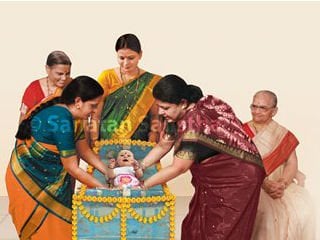 Namakaran (Naming ceremony)
Namakaran (Naming ceremony)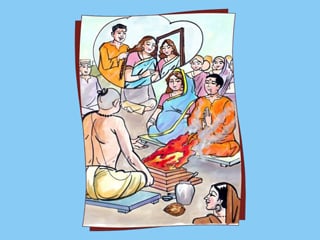 Simantonnayan (Parting the wife’s hair) -Third sanskar
Simantonnayan (Parting the wife’s hair) -Third sanskar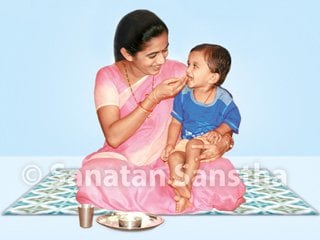 Sanskars performed after the birth of a child ! (Fourth, Fifth, Sixth and Seventh Sanskar)
Sanskars performed after the birth of a child ! (Fourth, Fifth, Sixth and Seventh Sanskar)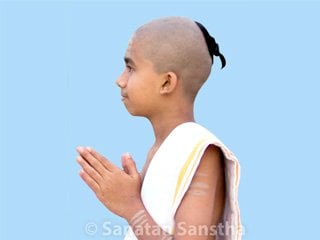 Choulkarma (Chudakarma) – keeping a shendi !
Choulkarma (Chudakarma) – keeping a shendi ! Upanayan (Vratabandha, Munja) – Ninth Sanskar
Upanayan (Vratabandha, Munja) – Ninth Sanskar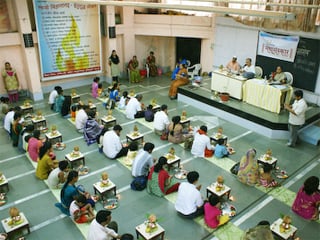 Medhajanan (Palsola vidhi)
Medhajanan (Palsola vidhi)